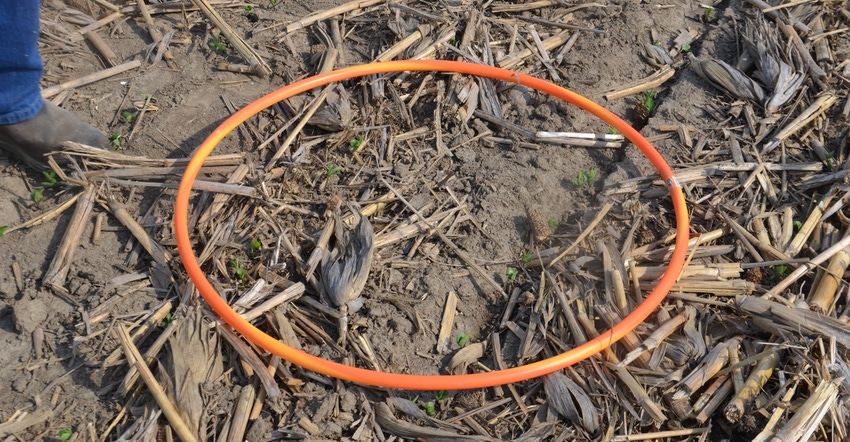February 4, 2022

Our dealer can get glyphosate and glufosinate, but not nearly enough. We have tech traits in different varieties for both. Some fields have waterhemp and marestail, while giant ragweed is the biggest challenge elsewhere. How can we put together a sound plan?
This month’s Indiana certified crop adviser panel includes Gene Flaningam, Flaningam Ag Consulting LLC, Vincennes; Brian Mitchem, area manager for Nutrien Ag Solutions/Loveland Products, Decatur; Jeff Nagel, agronomist for Ceres Solutions, Lafayette; and Shaun Casteel, Purdue University Extension soybean specialist, West Lafayette.
Flaningam: Current herbicide traits allow for postemergence application of Liberty on most current soybean genetics. Make a plan that includes a soil residual preemergence. Use glyphosate preemergence or as burndown, along with a growth regulator herbicide that fits your traits. A post application of Liberty can be made to both Xtend Flex and Enlist soybeans. This chemistry does a pretty good job on both waterhemp and giant ragweed. Water volume of 15 to 20 gallons per acre with AMS and sunny weather enhance Liberty performance.
Mitchem: The herbicides mentioned are very different in terms of site of action, weed spectrum, spraying management and potential volume of resistant weeds. However, the highest priority is applying a preemerge herbicide program with residual products that include several different effective sites of action.
Consider a sound residual program that would contain a Group 5 herbicide like metribuzin, and Group 14 like Authority or Valor to help with marestail and waterhemp. A Group 15 herbicide such as S-metolachlor, like Dual, or pyroxsulfone, like Zidua, can help on waterhemp. Fields with giant ragweed are more problematic. Residual herbicides have limited impact. Rely on postemergence products to control giant ragweed. Since most populations of giant ragweed are resistant to glyphosate, prioritize your glufosinate there. Spray weeds when small, and use a high-quality water conditioner and at least 15 gallons of water with glufosinate. Depending on traits, you may be able to use either Enlist or Xtend herbicide systems.
Nagel: The predominant soybean trait platforms in 2022 are either XtendFlex or Enlist E3. XtendFlex is tolerant to glyphosate, glufosinate and labeled dicamba herbicides. Enlist E3 is tolerant to glyphosate, glufosinate and 2,4-D choline. LibertyLink GT27 soybeans are tolerant to glyphosate and glufosinate.
Regardless of trait platform, start clean and apply an effective soil-applied herbicide at or near planting. This provides more flexible timing and allows for lower post-applied herbicide rates to stretch supplies.
The heavy lifting for broadleaf weed control is with dicamba on XtendFlex soybeans and Enlist One on E3 soybeans. You need glufosinate for LibertyLink GT27 soybeans for broadleaves. Higher spray volumes of 20 gallons per acre, medium to coarse droplet size, smaller weeds and warmer temperatures optimize glufosinate performance.
Casteel: Weed control should be built on solid burndown and residual herbicides, followed by timely postemergence applications. Strong burndown with full rate of Group 14 herbicide would start waterhemp control. For giant ragweed, the hope is to get a little activity from Group 2 herbicides, and then rely on timely in-season applications like dicamba, 2,4-D and/or glufosinate. Marestail management should happen before planting. Tillage or burndown is the first step, plus residuals with activity on marestail.
All programs rely on starting weed-free, or with herbicides actively killing weeds. The clean start is coupled with residual herbicides. In-season applications should target weed escapes and overlay another residual herbicide, so soybeans canopy and shade out more weed flushes.
You May Also Like




